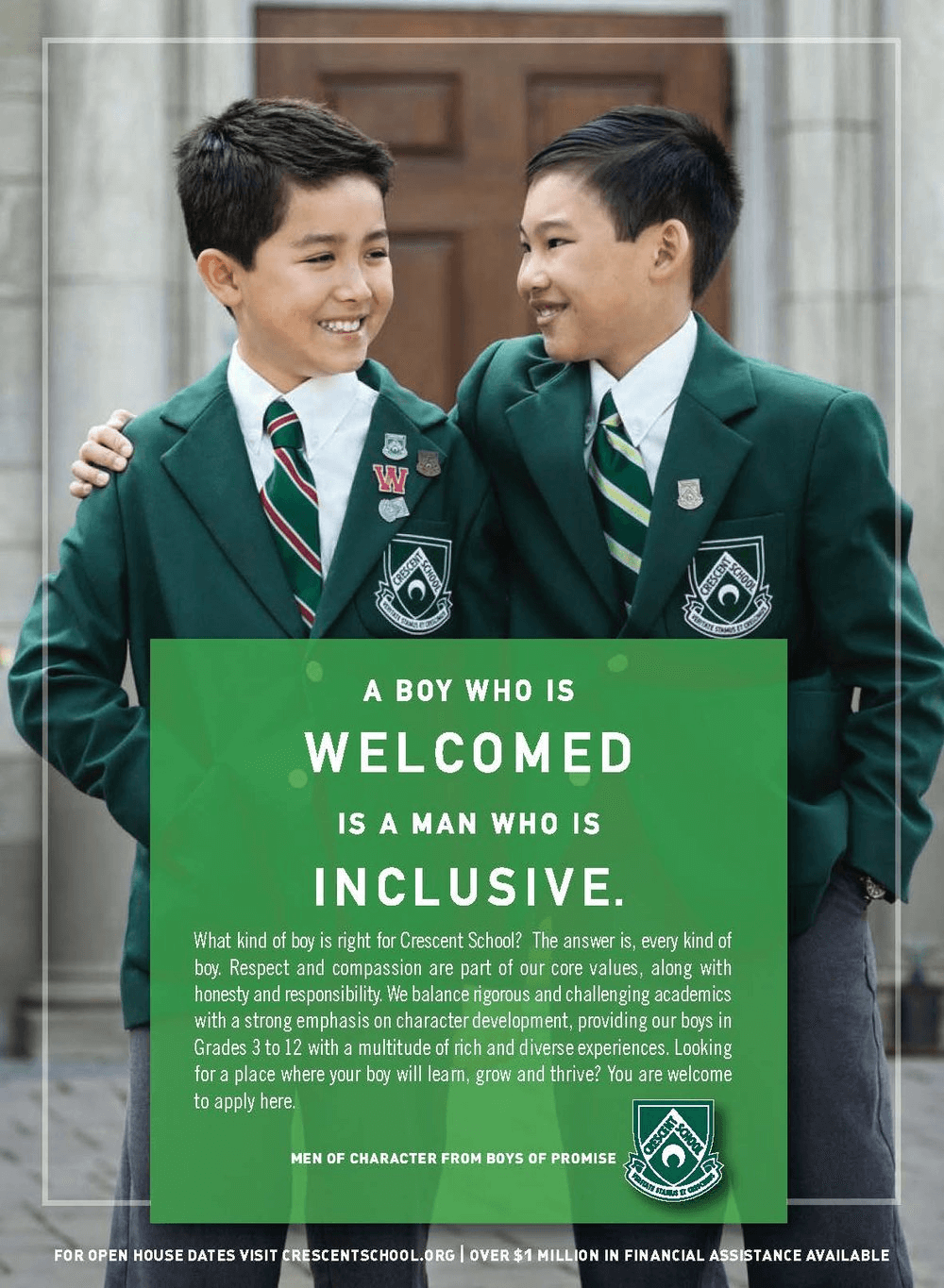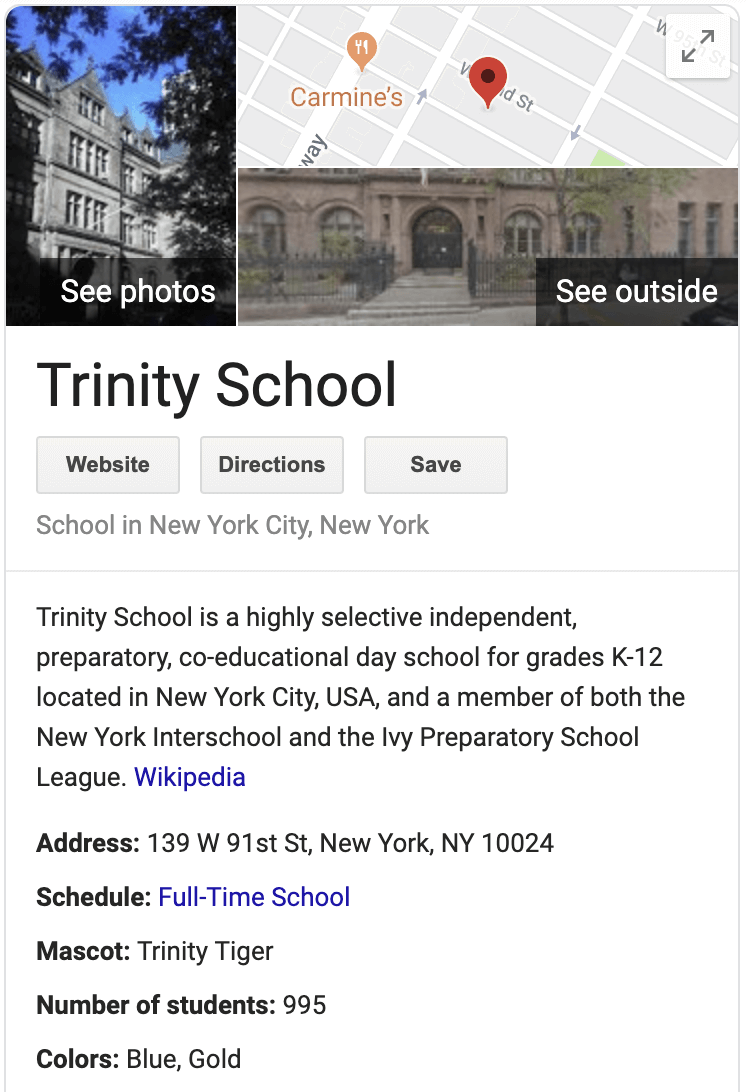School Marketing's Unlikely Future
Eventually, even an enrollment funnel that pulls parents through their decision-making process will not be sufficient.
When you bartered daily with your neighbors, marketing was useless. Townsfolk knew.
“The butcher’s meat is fresh today. The 3rd-grade school teacher is funny.”
Town gossip was all people needed to make decisions.
Marketing Signals
When we moved into the industrial age, commerce clustered around factories and businesses. The old one-room schoolhouses were consolidated and grew into large school districts.
An information asymmetry was created: the fresh meat went onto the conveyor line and into the supermarket five days before its due date. The funny teacher was given a textbook and told to prepare the students for a test. We stopped knowing the people operating our factories, stores, and schools. We couldn't gossip about them.
So...after the industrial age..with no gossip...how could you tell who/what was good?
Companies now had more information than customers, and that gave them power. They knew who was good, while everyone else knew very little.
The corporate manager could tell you about the production floor. Even the superintendent could tell you about the classrooms.
But all us customers and parents? We were left in the dark.
In the Mad Men era, companies used this newfound power to build brands. They broadcasted powerful marketing signals about quality, taste, hope, durability, prestige, exclusivity, and more.
If you were pushing a trolley down the supermarket aisle without any town gossip as your guide, you would now be swayed by an advertisement. Brands that developed better communication got more sales.

Marketing thrived everywhere - except in schools.
Hmm, why didn't this marketing craziness reach our schools? The reason was...
...school systems enjoyed a monopoly.
There's a strong argument that education was a public utility. So it should be a monopoly. Innovation was not on the agenda. There was no pressing need for new learning experiences. Families automatically sent their children to the local school district. Even if you didn't like your school teacher, there was not much you could do about it. Some school districts were amazing; others less so. The customers couldn't choose. So there was no reason for schools to develop marketing skills.
From Scarcity To Abundance
School choice was nonexistent, yet for marketing to thrive, choices are necessary.
Then something happened.
Different policy agendas built up the school choice movement over the last few decades. School choice unlocked abundance and unleashed an immediate need for marketing. Charters, private schools, and other pathways popped up in every community.
Today, more than half the United States (about 30 States) offers some type of extended educational choice to families:
- Individual Tax Credit/Deduction
- Tax Credit/Deduction, Voucher
- Open Enrollment
- Charter Schools
- Education Savings Accounts
For better or for worse, the school district monopoly crumbled. With the number of available options increasing, student enrollment fell in many schools.
As families left one school for greener pastures at another, principals and superintendents needed new families to fill seats. A decade behind the rest of the marketing world, they flocked to the good old channels: print magazines, radio ads, flyers.
"Get the word out. We’re here.”
I visited a school in an Austin high-income area earlier this year. Leaving behind a busy swarm of Lime scooters in the city center, I witnessed quiet, luxury SUVs dropping off solemn kids in uniform at 8 am. This leafy, quiet neighborhood seemed frozen in time. Two independent schools still cater to a handful of zip codes. They buy full monthly spreads in an established, glossy magazine circulating in the area. Both schools always keep a page in every issue. Next to ads for jewelry, their school brand signals quality, luxury, and exclusivity.

Implicit message: "We are here, and we are going to stay. We offer the highest quality education there is. Otherwise, we would not be comfortable paying for this ad."
The copy used in these ads is often safe. Most of the messaging looks similar:
- “A warm, nurturing environment.”
- “Small class sizes.”
- “It feels like a family.”
This is the first stage of school marketing - building a traditional school brand. The goal? Cultivating an identity of quality. This worked for a while and still works in a few peaceful neighborhoods where competition is weak.
But now, when most schools put out an ad in a magazine, no one calls. They pay for a radio spot only to wonder if anyone heard it play (or if it ever played). They distribute flyers, then find them dirty, torn, and blowing in the wind.
When we talk to school heads, they are saying, "It’s nearly impossible to get our message in front of the right parents." But the truth is different: it’s very easy to get your message in front of parents with a click of a button. What’s hard is getting them to listen.
The School Enrollment Funnel
Schools have now realized they need to move their marketing online. They are late, but it is still very effective as the parents are there and most schools aren’t.
- Parents spend 1.3X more time on Facebook than non-parents
- By 7 am, 56% of new parents have visited Facebook on their mobile device
- New moms post 2.5X more status updates, 3.5X more photos, and 4.2X more videos than non-moms on Facebook
School staff start posting stories on social media: photos of kids playing, or a studious teenager smiling while reading a big book. They dabble in Search Engine Optimization and build nice websites.
At this stage, we see a simple transfer from the offline to the online channels, so websites look like fancy magazine spreads - the equivalent of a print ad. For a short while, boosting posts brings results. This is fun. "Doing" social media signals tech-savviness.
As parents' digital behavior becomes more complex however, these first online attempts stop working too. Parenting groups have sprung up all over the internet. Parents are doing serious research online about different schools and are no longer swayed by traditional, direct-response marketing messages.
On autopilot, schools have been receiving a stable number of leads - mainly from the word-of-mouth effect of current parents. These leads were the school's lifeblood, and any temporary digital boost was the cherry on the cake. But now, all of these numbers are declining. At Enrollhand, we are seeing schools’ organic parent inquiries dry up.
Families now have tons of information about different schools at their fingertips. If you Google the name of any school, you already get more information than you need.

Then, there are Facebook reviews and specialized review sites like Niche.com, Greatschools.org, or Publicschoolreview.com. Independent bloggers are writing about how to choose a school, ebooks are full of sample questions to ask, and even social media posts and videos from current and past students inform the “buyer.” So much content is out there!
This also happened in other industries. In the “Car-Buying Process: One Consumer's 900+ Digital Interactions,” Google documented one buyer’s research before purchasing a new car. The findings are revealing: a large and growing digital research path and a decision-making process that is mostly done before any human interaction ever takes place. Some people say they would buy a new car without even visiting a showroom.

This is what we are seeing with schools. Inquiries are decreasing because parents don’t want to talk to the salesman when they can make their decision digitally. In my interview with Brendan Schneider, a leading school marketing expert, we talk about “ghost inquiries.” In the spring 2017 issue of The Yield, the Enrollment Marketing Association explored the rise of “stealth applicants,” those who are researching and applying to schools online without having set foot on campus.
What’s worse, the way parents search online is a mess. Here’s a simulated journey of a worried parent:
Kate is very concerned. What keeps her up at night, you ask? Her son keeps her up. Oh, in more ways than you can ever imagine!
He simply does not play well with others. Period. 😞
He’s sloppy with his homework. Always making mistakes. 😢
And he’s just…
...bored. Nothing interests him. 🙄
Kate was chatting with her friend on Facebook Messenger the other day. Her friend advised she should see a psychologist. Five minutes later, after skimming through 7 blog posts during a Google search, Kate felt there’s nothing to worry about.
Then, the Unruffled (Respectful Parenting) podcast had some useful tips on their latest episode. And finally a Facebook Page she discovered (by scrolling through a #MomItForward Twitterchat) got her worried again about her son’s lack of motivation.
How do you unravel this mess?
Here comes the Enrollment funnel. This is where school marketing is today. When parents take the search into their own hands and get lost in the corners of the internet, you need to go and find them, meet them where they are, and pull them towards you.
While the Enrollment Funnel stage lasts, we tell schools to focus on ONE digital channel, to avoid overwhelm. While Facebook advertising is becoming saturated and overpriced in other industries, it is still the Golden Age of Facebook for schools. We see only a small number of schools using online ads, so for now, the channel is still wide open.
Whether on Facebook or other channels, schools are currently most effective when they pull student families through the stages of awareness, structuring, and accelerating their messy journey.
Let’s go back to Kate, our virtual mom, to straighten out her messy research:
We won’t ask Kate to inquire, visit, or enroll just yet. She needs to first go through the:
1. Awareness stage:
Since Kate has never heard of us, we first have to make her aware of our school.
We’ll lead with topics that interest her: How to help your child get excited about school. Does your child have ADHD? How to cultivate a mindful relationship with your child.
We’ll create an emotional connection. She’ll think:
“Oh, that Facebook post is interesting! Who posted that? What’s that school?”
That’s it. That’s all we need at this stage.
When she sees something else from us, without knowing why, she'll associate our school brand with a general, positive feeling.
That’s our goal for this stage. School Brand Recall.
2. Consideration stage:
This is where we teach, gain trust, and install the right perceptions about our school.
We will start showing Kate more ads on topics that interest her. Download an ebook on student motivation. Watch a webinar on helping your child make new friends.
Kate is suddenly seeing us all over the place.
Her curiosity is piqued.
Her social media feeds will be packed with study materials on the topics that matter to her.
- An infographic
- A handbook on our signature program
- A testimonial from a current parent or student having similar issues
- Storytelling with “Day in the Life” themes at school
She now understands what we’re about, what makes us different, and why WE solve HER concerns.
The goal of this stage: Downloads, views, clicks.
3. Decision stage:
Finally! Time for the “Ask.”
A few weeks have passed. Maybe months. This depends on Kate’s personal decision-making journey.
We’ve assisted her throughout this path.
We’ve been her guide. But remember, she is steering her own research journey.
The goal at this stage?
Now the visit, tour, shadow day, open house (whatever your conversion event is called) is just the close.
Schools that start using an enrollment funnel make a subtle yet essential realization. Marketing is no longer only about signaling quality or attention-grabbing. It’s about trust.
Since parents have infinite freedom to choose their own pace and their own path, schools are no longer in charge. If they don't want to listen to you, they will click away. “Attracting eyeballs no longer sets you apart. Building trust among those who have their eyes on you does.” (source)
In conclusion, schools have finally moved online and are building enrollment marketing funnels using savvy paid marketing channels. They are starting to empathize with parents, answering their questions through blogs and podcasts to gain their trust.
